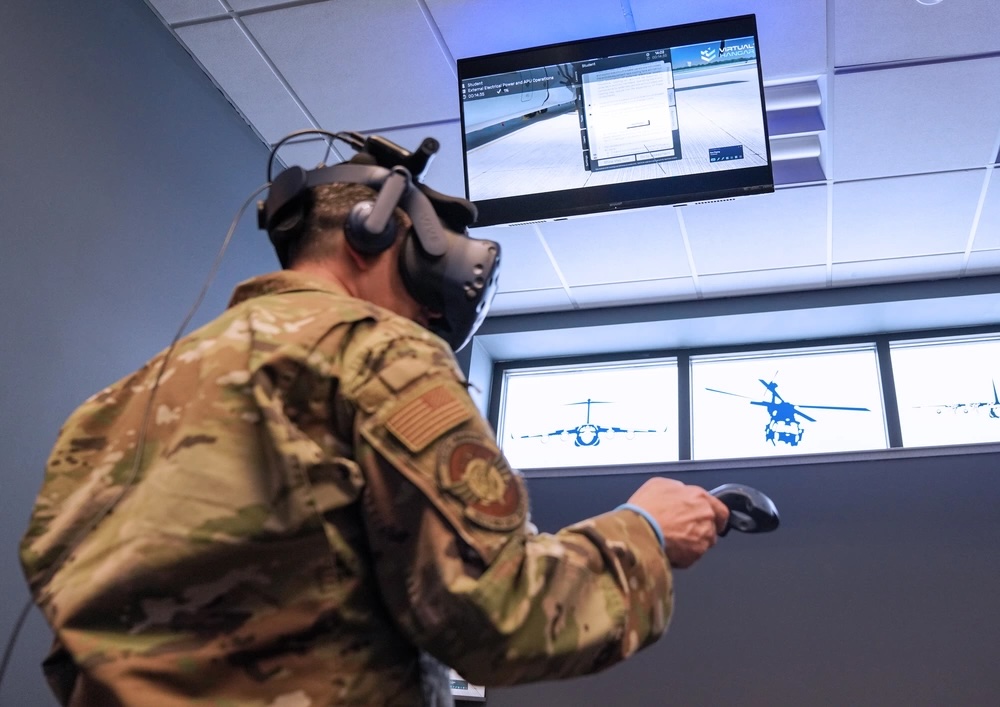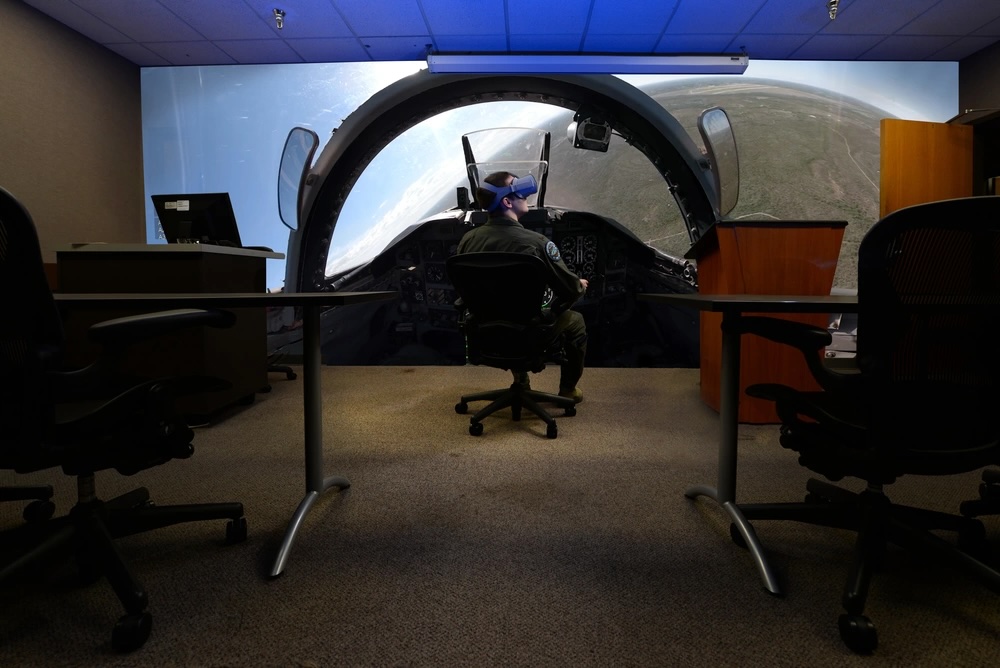New technologies such as augmented and virtual reality (AR/VR) and remote simulator instruction are helping train Airmen faster and improve graduation rates, according to Lt. Gen. Brian Robinson, the head of Air Education and Training Command. That technology is key to what he calls “the pace of cognition,” where Airmen can quickly take in new information and adapt to changes.
“We haven’t done our best in AETC in defining and codifying and stating out loud the value of cognition in learning,” Robinson said May 7 at the Air Force Modeling & Simulation Summit in San Antonio, Texas. “A lot of these technical tools, technology tools we have today, they up the value, the pace, the intensity of cognition, which is what I think accelerates it.”
One example is in aircraft avionics maintenance tech school, where AR/VR has cut 20 days off the syllabus, he said.
“That’s money, in terms of man days, and that’s time that they’re out of training and onto their mission from there,” Robinson said. “That is incredible.”

Another example is virtual reality training for military working dog handlers, which means less wear and tear on the actual dogs, the general said. He also noted that graduation rates for air traffic controller trainees at Keesler Air Force Base, Miss., improved after instructors put simulators in the dorms, which allowed students to get more practice in “at their time and not solely on the instructors’ schedule.”
Simulators and AR/VR are not new to the Air Force training scene, but they may play a larger role as the Air Force looks to radically change how it prepares Airmen for future conflicts. In February, the Air Force announced AETC would expand and be renamed Airman Development Command, which is meant to better train Airmen to work in small independent units and empower ADC to change quickly in response to operational demand.
While the exact details of ADC are yet to be released, officials have hinted that the training will be more tailored to the needs of each Airman, emphasize operating in austere environments, and keep developing Airmen throughout their careers.
“To maintain the asymmetrical advantage, we must develop the right mix of Airmen and Guardians with the skills and competencies needed for high-end systems-of-systems combat roles and to ensure technical superiority,” Robinson said in a statement in February. “These changes help us streamline institutional force development responsibilities under one command, significantly improving the Air Force’s ability to produce and retain mission ready Airmen for competition and conflict.”
AETC as a whole took lessons from recent adjustments to undergraduate pilot training, which now uses more simulators, self-paced learning, and artificial intelligence. Most aviators think of simulators as large, expensive, full-motion machines, Robinson said, but the new pilot training courses have shown that smaller, more affordable devices are also effective. They also enable other changes such as using remote simulator instructors to train student pilots at isolated bases.
“We have a hard time getting folks … to Laughlin Air Force Base,” Robinson said. “It’s a fantastic environment, but it’s remote and isolated and in many circumstances, people don’t want to be there or they can’t be there based on health care that’s available. So how do we use technology to bridge that gap so we still have the right amount of instructors to teach our Airmen?”

Next up, Robinson said AETC is looking into how to prepare pilots for “fifth-gen aviation, versus just aviation.” Partner air forces are already screening pilot candidates for this as fifth-generation aircraft take up a larger portion of their fleets, he said.
“They screen up front not just your hand-eye coordination and dexterity and your aptitude,” the general said. “They’re looking for how you handle large amounts of volume and decision-making coming at you, which is what a fifth-gen platform will do for you and present to you as an operator.”
To pursue some of these changes, AETC will stand up several “centers of excellence” this summer, Robinson said, which “will work with industry, academia, and the learning engineering/learning design spaces to figure out what we should be employing, what we should be going after in that space.”
But new technology requires a workforce ready to use it, and that is not the case yet at AETC, Robinson said. The command aims to “digitally upskill our force” in the years ahead, meaning new requirements for certain positions and new educational tools with which to meet them.
Having first taken command of AETC in May 2022, Robinson is due to step down soon as part of the regular two-year rotation for Active duty officers, though a successor and change of command date has not yet been selected, an AETC spokesperson told Air & Space Forces Magazine. Still, the general hopes that no matter what changes come down the pipe for AETC, they continue to evolve rather than remain fixed.
“How do we set it up in a way that we can continue to iterate?” he asked. “We can no longer accept ‘Hey, this is good for 10 years.’ That is not acceptable, at least to me.”




















